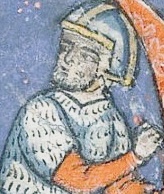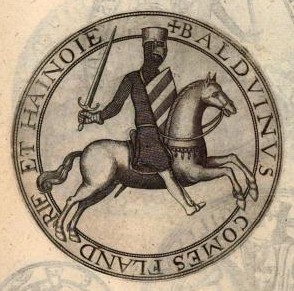Related Research Articles
The 1150s was a decade of the Julian Calendar which began on January 1, 1150, and ended on December 31, 1159.
Year 1130 (MCXXX) was a common year starting on Wednesday of the Julian calendar.
The 1140s was a decade of the Julian Calendar which began on January 1, 1140, and ended on December 31, 1149.
The 1180s was a decade of the Julian Calendar which began on January 1, 1180, and ended on December 31, 1189.
The 1190s was a decade of the Julian Calendar which began on January 1, 1190, and ended on December 31, 1199.
The 1110s was a decade of the Julian Calendar which began on January 1, 1110, and ended on December 31, 1119.
Year 1118 (MCXVIII) was a common year starting on Tuesday of the Julian calendar.

Year 1060 (MLX) was a leap year starting on Saturday of the Julian calendar.
Year 1151 (MCLI) was a common year starting on Monday of the Julian calendar.

Year 1150 (MCL) was a common year starting on Sunday of the Julian calendar.
Year 1186 (MCLXXXVI) was a common year starting on Wednesday of the Julian calendar.

Henry the Lion was a member of the Welf dynasty who ruled as the duke of Saxony and Bavaria from 1142 and 1156, respectively, until 1180.

Baldwin I was the first emperor of the Latin Empire of Constantinople; Count of Flanders from 1194 to 1205 and Count of Hainaut from 1195-1205. Baldwin was one of the most prominent leaders of the Fourth Crusade, which resulted in the sack of Constantinople in 1204, the conquest of large parts of the Byzantine Empire, and the foundation of the Latin Empire. He lost his final battle to Kaloyan, the emperor of Bulgaria, and spent his last days as his prisoner.

Hubert Walter was an influential royal adviser in the late twelfth and early thirteenth centuries in the positions of Chief Justiciar of England, Archbishop of Canterbury, and Lord Chancellor. As chancellor, Walter began the keeping of the Charter Roll, a record of all charters issued by the chancery. Walter was not noted for his holiness in life or learning, but historians have judged him one of the most outstanding government ministers in English history.
Joscelin of Courtenay, Prince of Galilee and Lord of Turbessel (1115–1131) and Count of Edessa (1119–1131), ruled over the County of Edessa during its zenith, from 1118 to 1131. Captured twice, Joscelin continued to expand his county, even participating in the Battle of Azaz in 1125. Gravely injured during the collapse of a sapper mine, Joscelin marched his army to relieve the besieged fortress of Kaysun, and died soon after.
Philip I, commonly known as Philip of Alsace, was count of Flanders from 1168 to 1191. During his rule Flanders prospered economically. He took part in two crusades and died of disease in the Holy Land.

Baldwin V of Hainaut was count of Hainaut (1171–1195), margrave of Namur as Baldwin I (1189–1195) and count of Flanders as Baldwin VIII (1191–1195).
Sibylla of Anjou was a countess consort of Flanders. She was the wife of Thierry, Count of Flanders and the regent of Flanders in 1138-1139 and 1147-1149.
Alice of Namur was the daughter of Count Godfrey I of Namur and Countess Ermesinde of Luxembourg.

The House of Flanders—also called the Baldwins —was a medieval ruling family that was founded by Baldwin Iron Arm, son-in-law of Charles the Bald.
References
- ↑ Donvito, Philippo (2005). "Queen Tamar of Georgia (1184-1213): The Lioness of the Caucasus". Medieval Warfare. IV-2: Female Knights and Fighting Princesses - Medieval Women as Warriors: 19–23.
- ↑ Tsurtsumia, Mamuka (2014). "Couched Lance and Mounted Shock Combat in the East: The Georgian Experience". In Rogers, Clifford J.; DeVries, Kelly; France, John (eds.). Journal of Medieval Military History. Vol. XII. Woodbridge, UK: Boydell & Brewer Ltd. pp. 89–90. ISBN 9781843839361.
- ↑ Wheeler, Benjamin Webb (1927). "The Papacy and Hispanic Interstate Relations, 1195-1212". The Catholic Historical Review. 13 (1): 29–38. ISSN 0008-8080. JSTOR 25012394.
- ↑ Jumper, Mark A. (2017). Shaw, Jeffrey M.; Demy, Timothy J. (eds.). War and Religion: An Encyclopedia of Faith and Conflict. Santa Barbara, CA, Denver, CO and Oxford: ABC-CLIO. pp. 13–14. ISBN 9781610695176.
- ↑ Postles, Dave (2002). "Religious Houses and the Laity in the Eleventh to Thirteenth Century England: An Overview". In Morillo, Stephen (ed.). The Haskins Society Journal: Studies in Medieval History 2002 . Vol. XII. Woodbridge, UK: Boydell Press. pp. 9. ISBN 9781843830085.
- ↑ Davis, G. R. C. (2010). Medieval Cartularies of Great Britain and Ireland. London: The British Library Publishing Division. p. 31. ISBN 9780712350389.
- ↑ Lascaratos, John; Marketos, S. (March 1, 1992). "The penalty of blinding during Byzantine times". Documenta Ophthalmologica. 81 (1): 133–144. doi:10.1007/BF00155023. ISSN 1573-2622. PMID 1473461. S2CID 19966858.
- ↑ Ciggaar, Krijna Nelly (1996). Western Travellers to Constantinople: The West and Byzantium, 962-1204 : Cultural and Political Relations. Leiden, Boston: BRILL. p. 356. ISBN 9789004106376.
- ↑ MacEvitt, Christopher (2011). "Martyrdom and the Muslim World Through Franciscan Eyes". The Catholic Historical Review. 97 (1): 1–23. ISSN 0008-8080. JSTOR 23052738.
- ↑ Craughwell, Thomas J. (2007). This Saint's for You!: 300 Heavenly Allies for Architects, Athletes, Brides, Bachelors, Babies, Librarians, Murderers, Whales, Widows, and You. Philadelphia, PA: Quirk Books. p. 148. ISBN 9781594741845.
- ↑ Lewis, James B. (April 1, 2011). "Robert I. Hellyer. Defining Engagement: Japan and Global Contexts, 1640–1868. (Harvard East Asian Monographs, number 326.) Cambridge, Mass.: Harvard University Asia Center. 2009. Pp. xvi, 281. $39.95.Reviews of BooksAsia". The American Historical Review. 116 (2): 429–430. doi:10.1086/ahr.116.2.429a. ISSN 0002-8762.
- ↑ McHardy, A.K. (May 1, 1988). "K.J. Stringer (ed.), Essays on the nobility of medieval Scotland". Northern Scotland. 8 (First Series) (1): 75–76. doi:10.3366/nor.1988.0010. ISSN 0306-5278.
- ↑ Ryerons, Richard Alan; Reveals, Jonna M.; Walker, Celeste; Lint, Gregg G.; Costello, Humphrey J., eds. (1993). Adams Family Correspondence. Vol. 5: October 1782 - November 1784. Cambridge, MA and London: Harvard University Press. p. 336. ISBN 9780674020061.
- ↑ Turner, Ralph V. (Spring 1997). "Richard Lionheart and English Episcopal Elections*". Albion. 29 (1): 1–13. doi:10.2307/4051592. ISSN 0095-1390. JSTOR 4051592.
- ↑ Stubbs, William (2012). Chronicles and Memorials of the Reign of Richard I (in Latin). Vol. 2: Epistolae Cantuarienses, the Letters of the Prior and Convent of Christ Church, Canterbury, from AD 1187 to AD 1199. Cambridge and New York: Cambridge University Press. p. 148. ISBN 9781108048064.
- ↑ King, Richard John (1869). Handbook to the Cathedrals of England: Northern Division. Vol. Part II: Durham, Chester, Manchester. London: John Murray. p. 344.
- ↑ Munz, Peter (October 1, 1965). "Frederick Barbarossa and Henry the Lion in 1176". Historical Studies: Australia and New Zealand. 12 (45): 1–21. doi:10.1080/10314616508595307. ISSN 0728-6023.
From the fact that the author says 'habebat' it has been inferred that this addition was made after 1195, ie after the death of Henry the Lion
- ↑ Lyon, Jonathan R. (2012). Princely Brothers and Sisters: The Sibling Bond in German Politics, 1100–1250. Ithaca, NY and London: Cornell University Press. p. 139. ISBN 9780801467844.
- ↑ Swarzenski, Georg (1949). "Romanesque Aquamanile of the Guennol Collection". Brooklyn Museum Bulletin. 10 (4): 1–10. ISSN 2578-7640. JSTOR 26457966.
this is certainly the later piece, probably made or finished after the death of Henry the Lion (1195)
- ↑ Barroca, Mário Jorge (2001). "Os castelos dos templários em Portugal e a organização da defesa do reino no séc. XII". Acta Historica et Archaeologica Mediaevalia (22): 213–227–227. ISSN 2339-9996.
- ↑ Mendes, Paulo Alexandre Cabaço (December 17, 2018). "De Redinha a Pombal (1508): a Terra e os Homens. Estudo de Antroponímia e de Toponímia". Repositório Institucional da Universidade Autónoma de Lisboa: Departamento de História, Artes e Humanidades Mestrado Em História, Arqueologia e Património: 13.
Gualdim Pais (c. 1118/20-1195)
- ↑ Napran, Laura (2008). France, John (ed.). Mercenaries and Paid Men: The Mercenary Identity in the Middle Ages. Proceedings of a Conference Held at University of Wales, Swansea, 7th-9th July 2005. Leiden and Boston: BRILL. p. 287. ISBN 9789047432616.
- ↑ Wolff, Robert Lee (July 1, 1952). "Baldwin of Flanders and Hainaut, First Latin Emperor of Constantinople: His Life, Death, and Resurrection, 1172-1225". Speculum. 27 (3): 281–322. doi:10.2307/2853088. ISSN 0038-7134. JSTOR 2853088. S2CID 163762031.
Baldwin retained only the titles Marquis of Namur and Count of Hainaut. When he died in December 1195, the young Baldwin inherited Hainaut
- ↑ Draelants, Isabelle; Balouzat-Loubet, Christelle (January 2015). La formule au Moyen Âge, II / Formulas in Medieval Culture, II: Actes du colloque international de Nancy et Metz, 7-9 juin 2012 / Proceedings of the International Conference, Nancy and Metz, 7th-9th June 2012. Atelier de recherche sur les textes médiévaux. Vol. 23. Turnhout, Belgium: Brepols Publishers. p. 17. doi:10.1484/m.artem-eb.5.108413. ISBN 9782503554327.
The period covers the successive reigns of Count Baldwin V/ VIII (1191-1194/1195), double-numbered in this way because he was the fifth count of Hainaut and the ninth count of Flanders to bear the name Baldwin
- ↑ Dinzelbacher, Peter (2005). "Kirchenreform und Frauenleben im Hohen Mittelalter". Mitteilungen des Instituts für Österreichische Geschichtsforschung. 113 (JG): 20–40. doi:10.7767/miog.2005.113.jg.20. ISSN 2307-2903. S2CID 163481019.
Ascelina von Boulancourt (t 1195)
- ↑ Pinard, T. (1847). "Notre-Dame de Boulancourt (Haute-Marne)". Revue Archéologique. 4 (2): 474–477. ISSN 0035-0737. JSTOR 41745542.
la contrée appelée le Champ-Vieillard un monastère de fem mes, à la tète duquel il plaçait la vierge Asceline, sa cousine; elle mourut, suivant les uns, l'an 1165; suivant les autres, en 1195